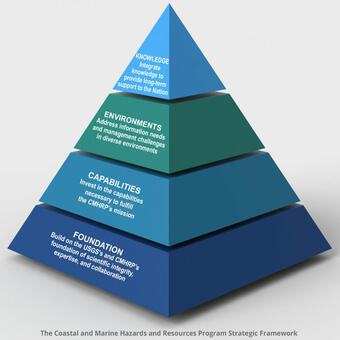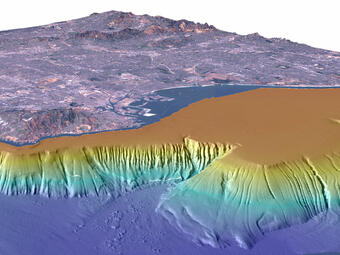The CMHRP Decadal Science Strategy 2020-2030
This geonarrative constitutes the Decadal Science Strategy of the USGS's Coastal and Marine Hazards and Resources Program for 2020 to 2030.

The Decadal Science Strategy of the Coastal and Marine Hazards and Resources Program (CMHRP) describes the CMHRP's vision and mission and the strategic framework needed to support key program goals: Conduct research and develop science-based tools that lead to safer, more productive coastal communities and improved stewardship of natural resources.
Tips for navigating this Plan
This information explains how to navigate this website so that you get the most out of the experience
Strategic Framework
The CMHRP uses four overarching approaches to develop our research program
Foundation
The CMHRP's high quality reputation is built on scientific integrity, expertise, and collaboration with partners
Capabilities
CMHRP invests in diverse capabilities to achieve our mission.
Knowledge
The CMHRP creates a bridge between the research community and decision makers
Environments: See where we work




Related
Explore examples of our science that are featured in the Plan.
Delineating the U.S. Extended Continental Shelf
California Seafloor and Coastal Mapping Program
Atlantic and Gulf of America Submarine Landslides-Tsunami Hazards Project
Climate Change on U.S. Arctic Ocean Margins
Deep Sea Corals
Measuring Sediment Flux in Blackwater National Wildlife Refuge
The Coupled Ocean-Atmosphere-Wave-Sediment Transport Modeling System
Caribbean Tsunami and Earthquake Hazards
The Coastal Storm Modeling System
Elwha River Restoration Project
Fire Island National Seashore
CMHRP Response to Hurricane Sandy in Estuaries and Wetlands
Related
Explore examples of our science that are featured in the Plan.













